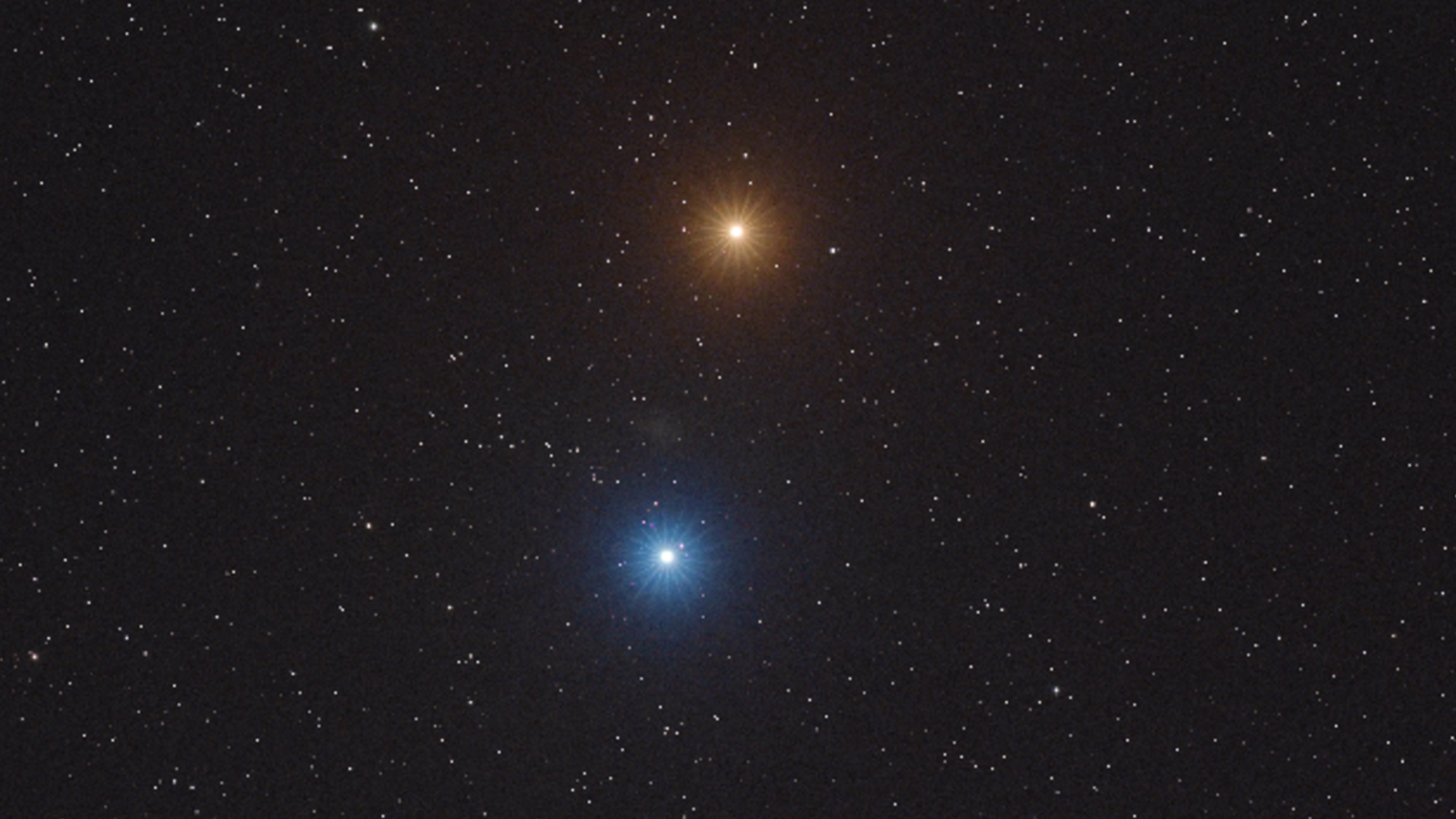
A new photo shows Mars shining like a red star in the night sky, alongside the blue-tinged “Heart of the Lion” star, Regulus. Despite their drastic differences, the two objects currently look remarkably similar.
Regulus is the brightest star in the constellation Leo. The point of light is coming from a system containing four stars, arranged into two pairs of two, shining approximately 79 light-years from Earth — or around 2.8 million times farther from our planet than Mars. The system’s blue tinge comes from its largest star, a blue subgiant around 4.5 times more massive than the sun. It often appears alongside, or gets eclipsed by, other solar system planets and Earth’s moon, because it is situated near the ecliptic — the plane in the night sky where all solar system worlds orbit the sun.
Mars and Regulus currently appear very close to one another. This conjunction peaked on June 17, when the pair was less than one degree apart, which is equal to around 1.5 times the diameter of the moon in the night sky. The Red Planet is currently shining very brightly at night because of its position relative to Earth and the sun, making it look like a red star.
On June 16, the Virtual Telescope Project captured an incredible image of the two objects with nearly identical brightness, using a 14-inch telescope in Italy. The stellar objects look like perfect mirror images of each other, aside from their striking color contrast.
“The beauty of their colors is mind-blowing,” Gianluca Masi, an astronomer and founder of the Virtual Telescope Project, told Spaceweather.com.
Related: Parisian photographer produces phenomenal, perfectly-proportioned ‘planetary parade’ portrait
If you look hard at the image, you may be able to see a fuzzy, faint spot of light between Mars and Romulus, located slightly closer to the blue star. This is the ghostly trace of the Leo I dwarf galaxy, about 820,000 light-years away: “Capturing it in the same frame as Mars and Regulus is something rare and deeply evocative,” Masi said.
Mars and Romulus will remain close to one another until June 22, when this conjunction officially ends, according to the BBC’s Sky at Night Magazine. The conjunction began on June 11.
The two bodies are no longer as close as they were, but they can still be seen together with the naked eye. But you can get a better look at the pair using a decent telescope or a pair of stargazing binoculars. The best time to see it is just after twilight under totally clear skies, according to Live Science’s sister site Space.com.
2025 has already seen several noteworthy conjunctions, including a rare “planetary parade” in February, when all seven solar system worlds were near-perfectly aligned in the night sky. Mars and Mercury will also have close conjunctions with the moon later this month.
Premium IPTV Experience with line4k
Experience the ultimate entertainment with our premium IPTV service. Watch your favorite channels, movies, and sports events in stunning 4K quality. Enjoy seamless streaming with zero buffering and access to over 10,000+ channels worldwide.
















